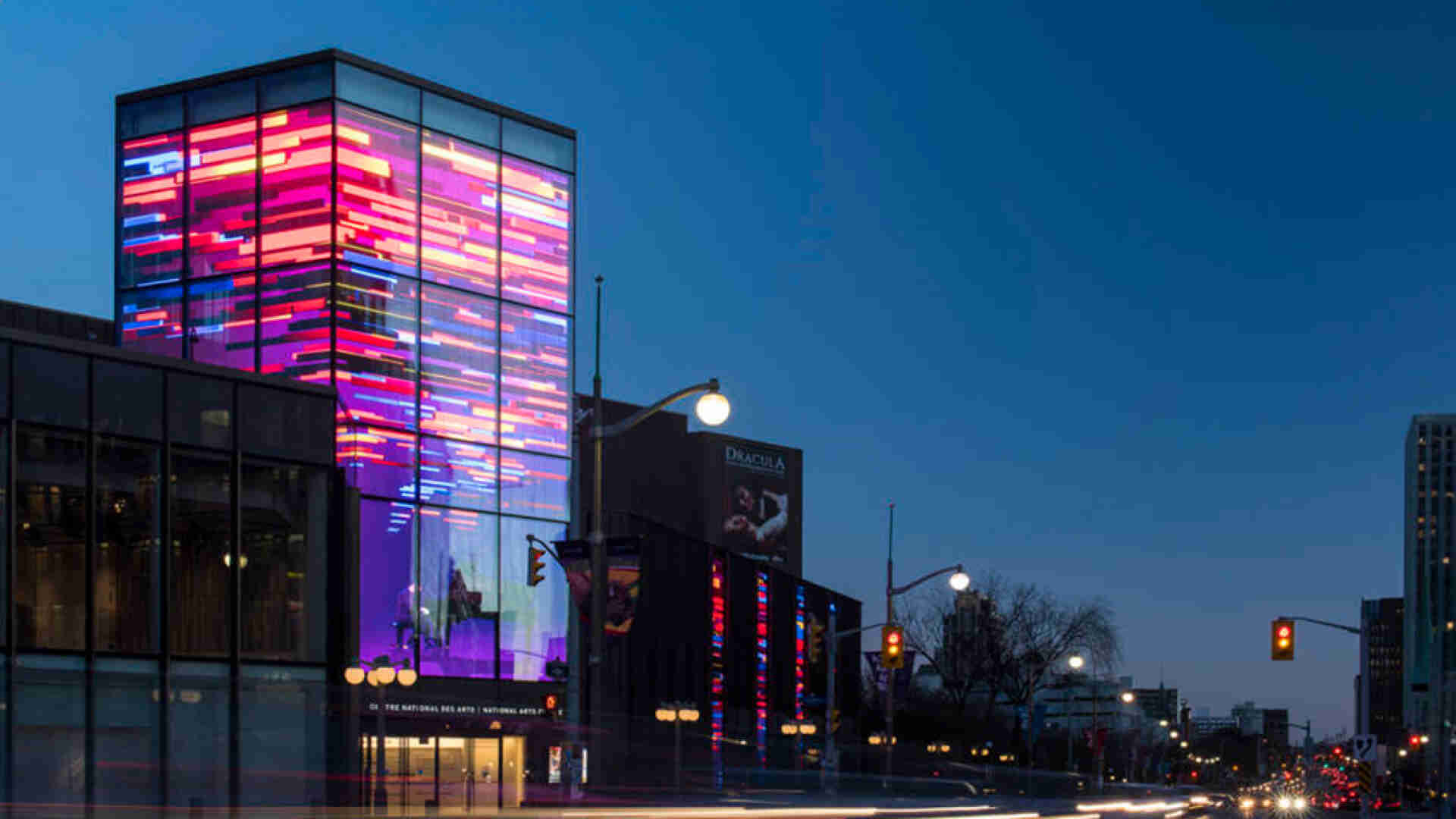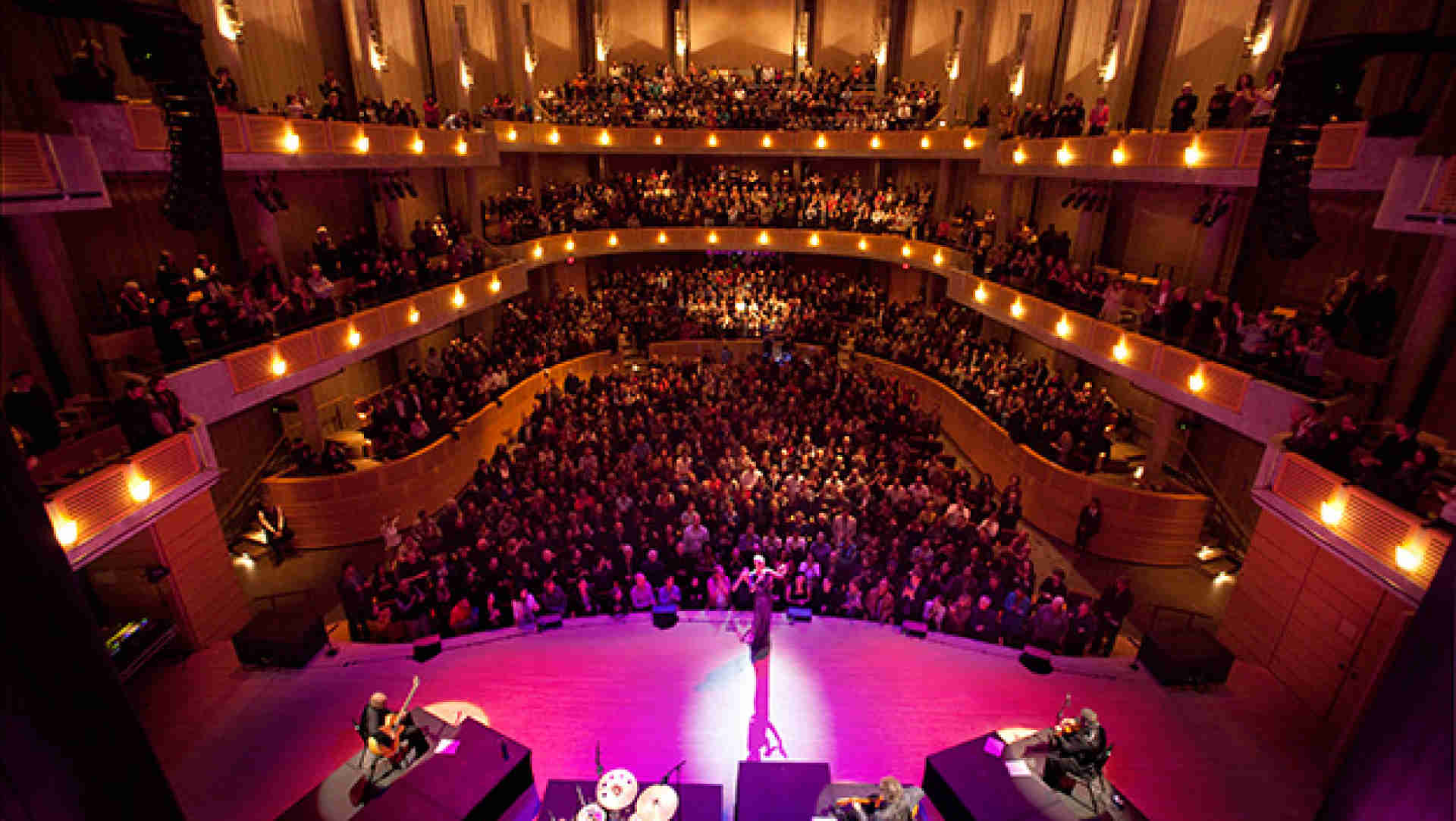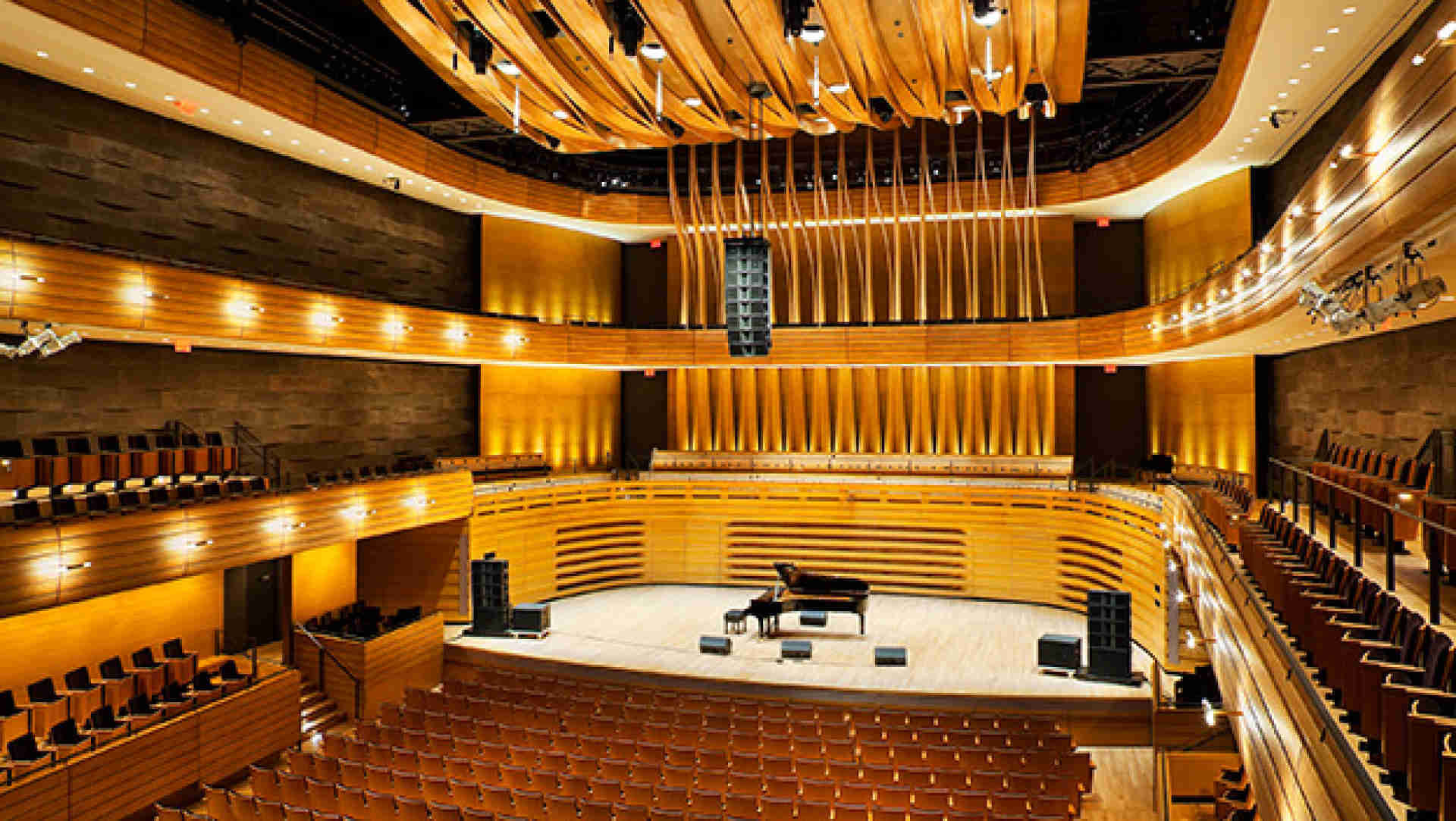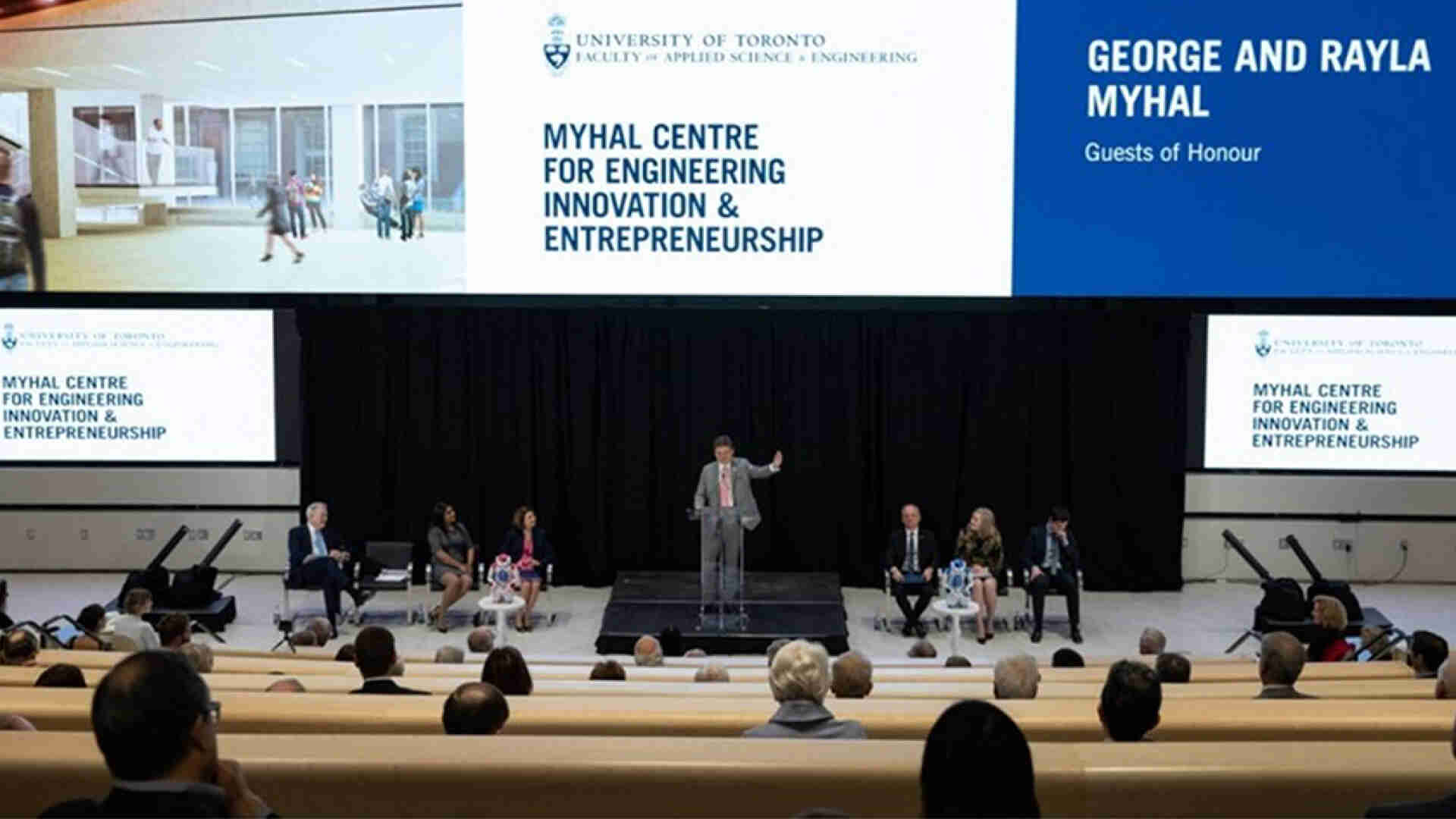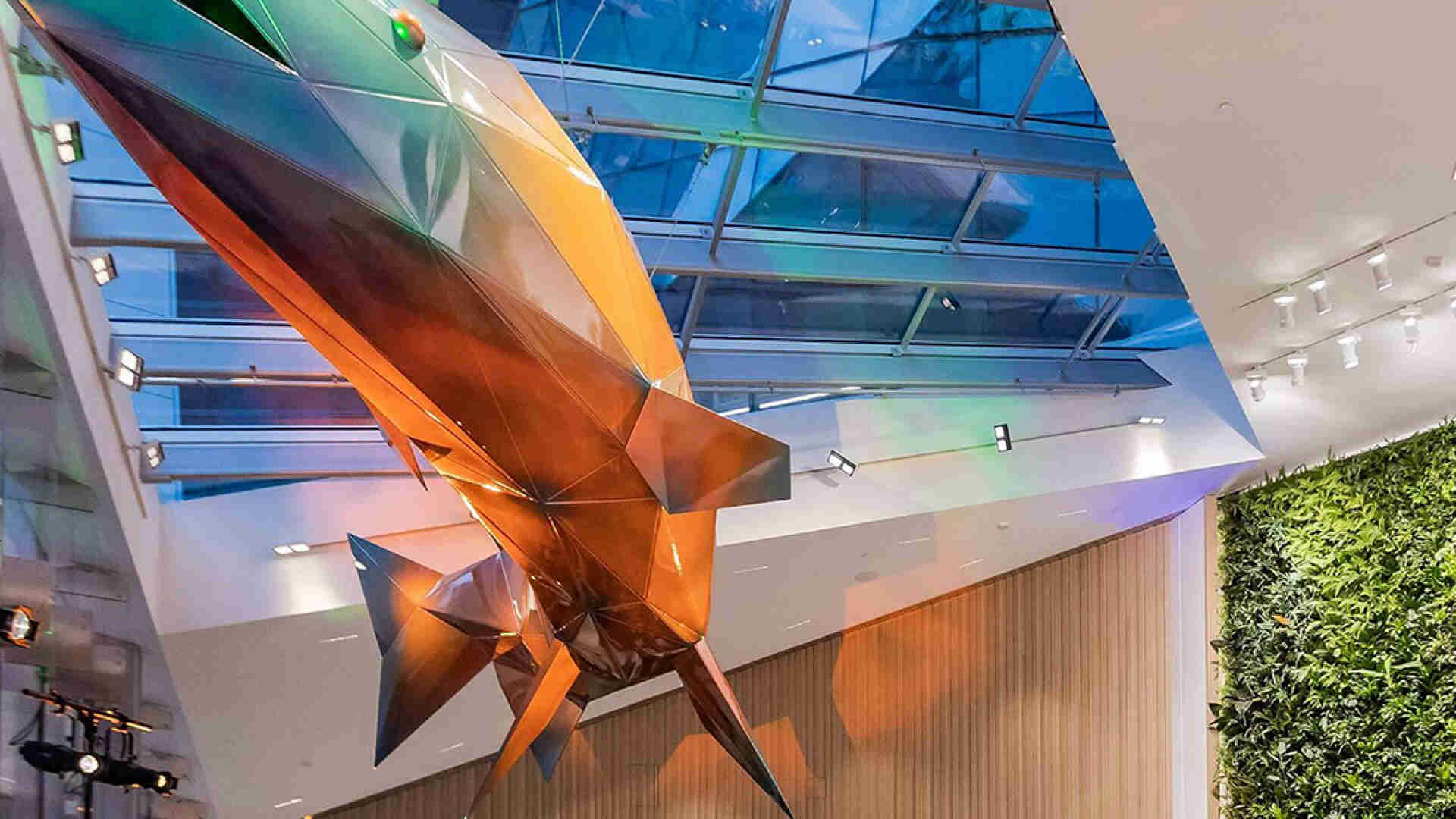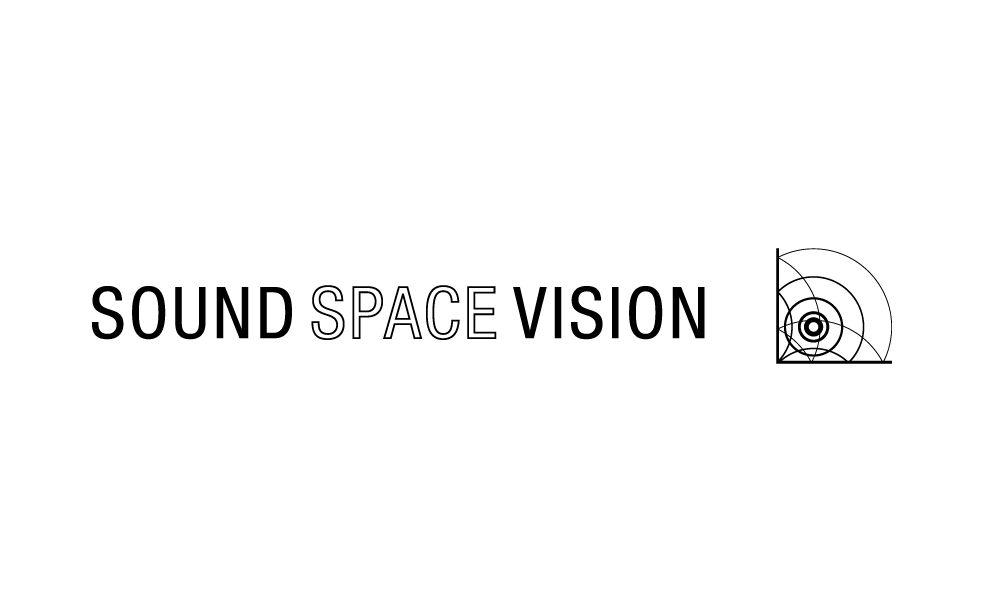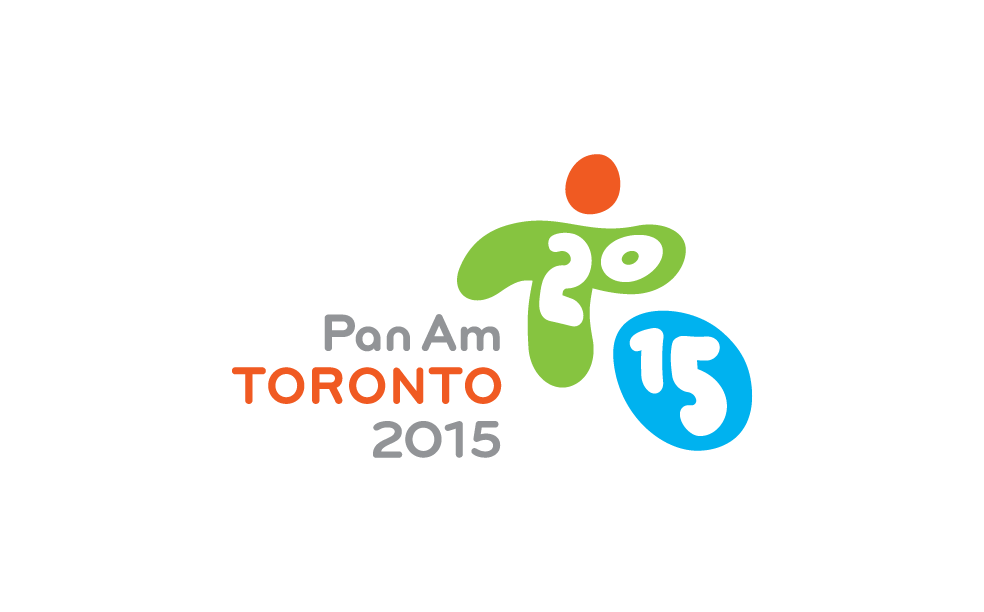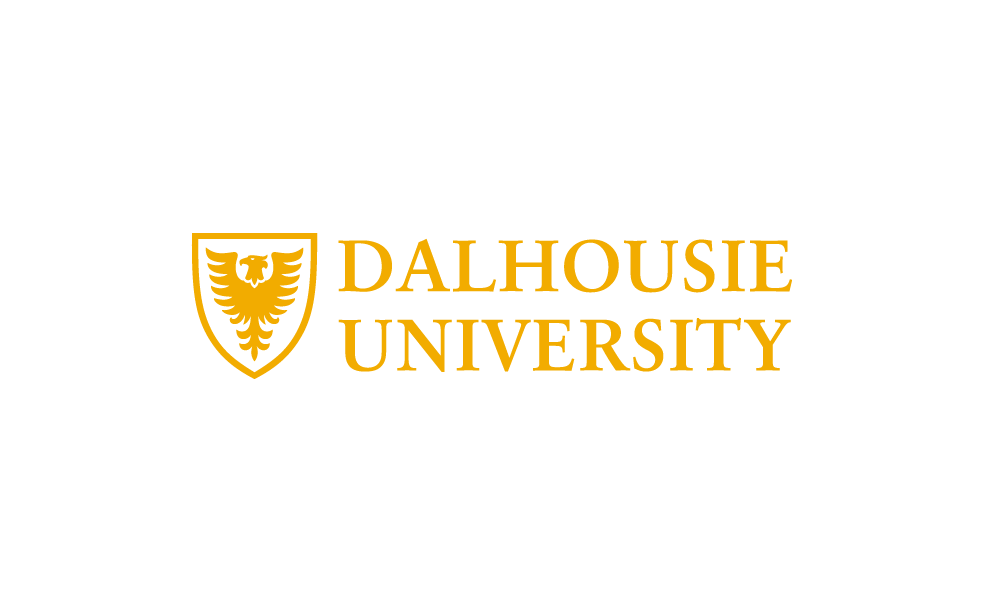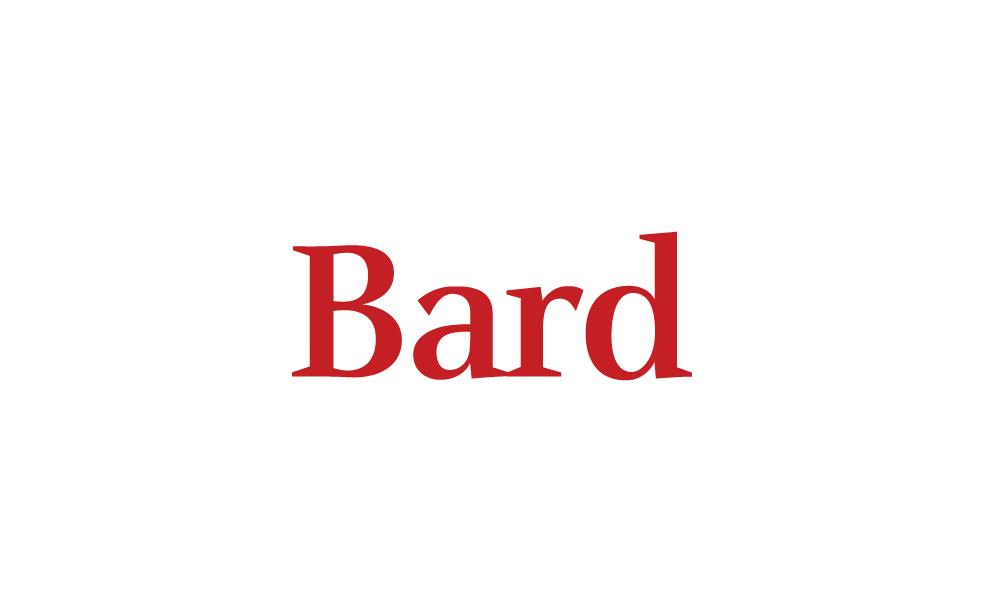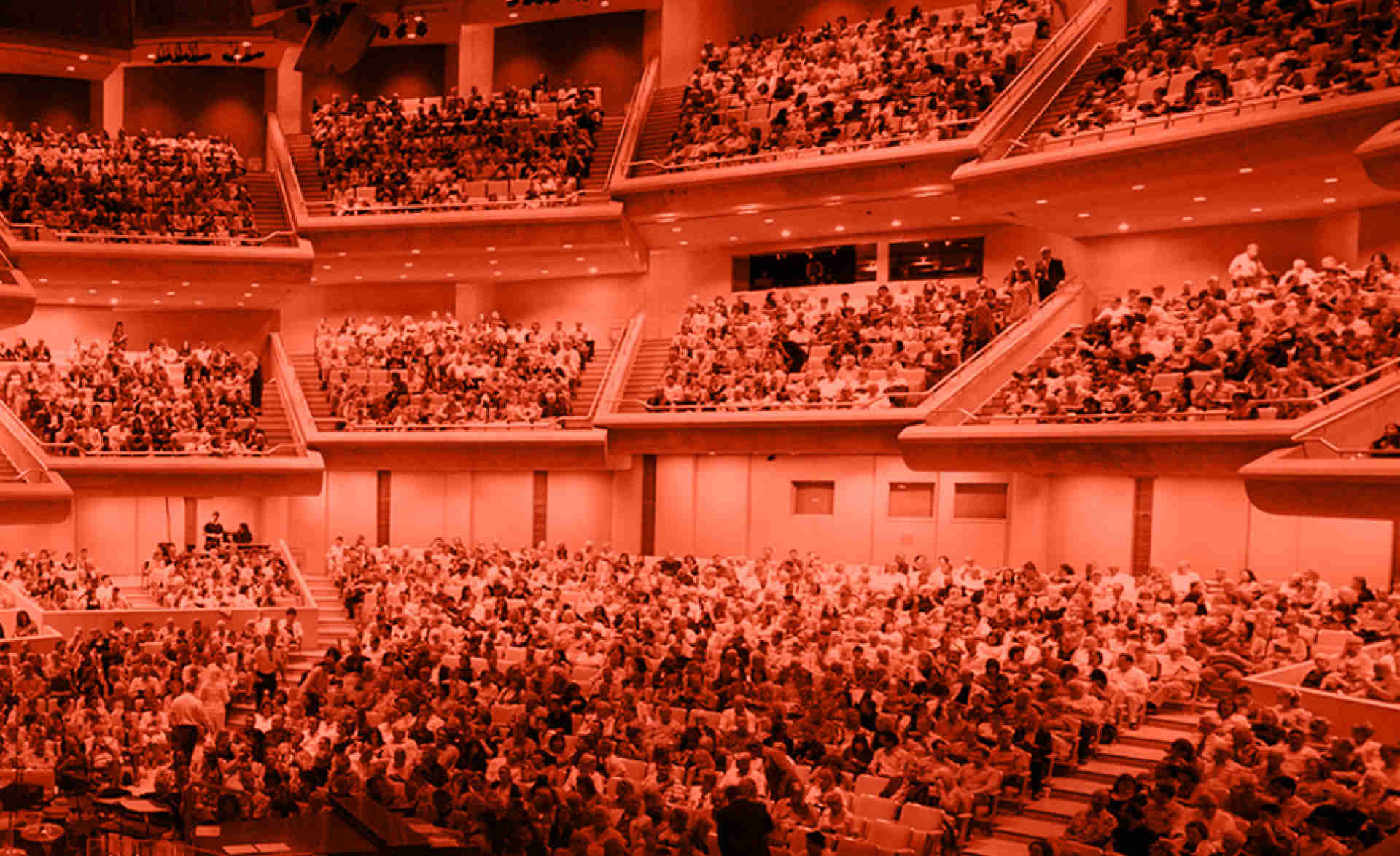The Music Company

PHOTO: SIMON TANENBAUM
Allied Music Centre is a complete venue for live performance and recording
With the commissioning of facilities in a new seven-story tower, the $189.5 million Massey Hall Revitalization Project in downtown Toronto is drawing to a close. The renovation and refurbishment of the 130 year-old Massey Hall itself was completed two years ago, with such modern appointments as deployable seating, enhanced acoustics, and load-bearing infrastructure to support rigging for state-of-the-art performance lighting and sound equipment, in addition to new lobby and restroom facilities conforming to present –day building codes (see Massey Hall project file).
The tower houses two new venues: the 500-capacity TD Music Hall that opened in February 2023, and a 100-seat community theater that is now operational, along with the Dolby Atmos-equipped Deane Cameron Recording Studio, two capture suites, two small audio-only production rooms, dressing rooms and offices. The tower also contains Massey Hall’s new lobbies, each with a capacity of 400, and loading dock. Due to a lack of street-level space in the front of the building, the lobbies are located on two levels behind the stage connected to the seating areas by four glass-enclosed, fully conditioned passerelles suspended well above street level from the exterior sides of the building. The 350-capacity Muskoka Spirits Basement Bar directly beneath Massey Hall has also been renovated.
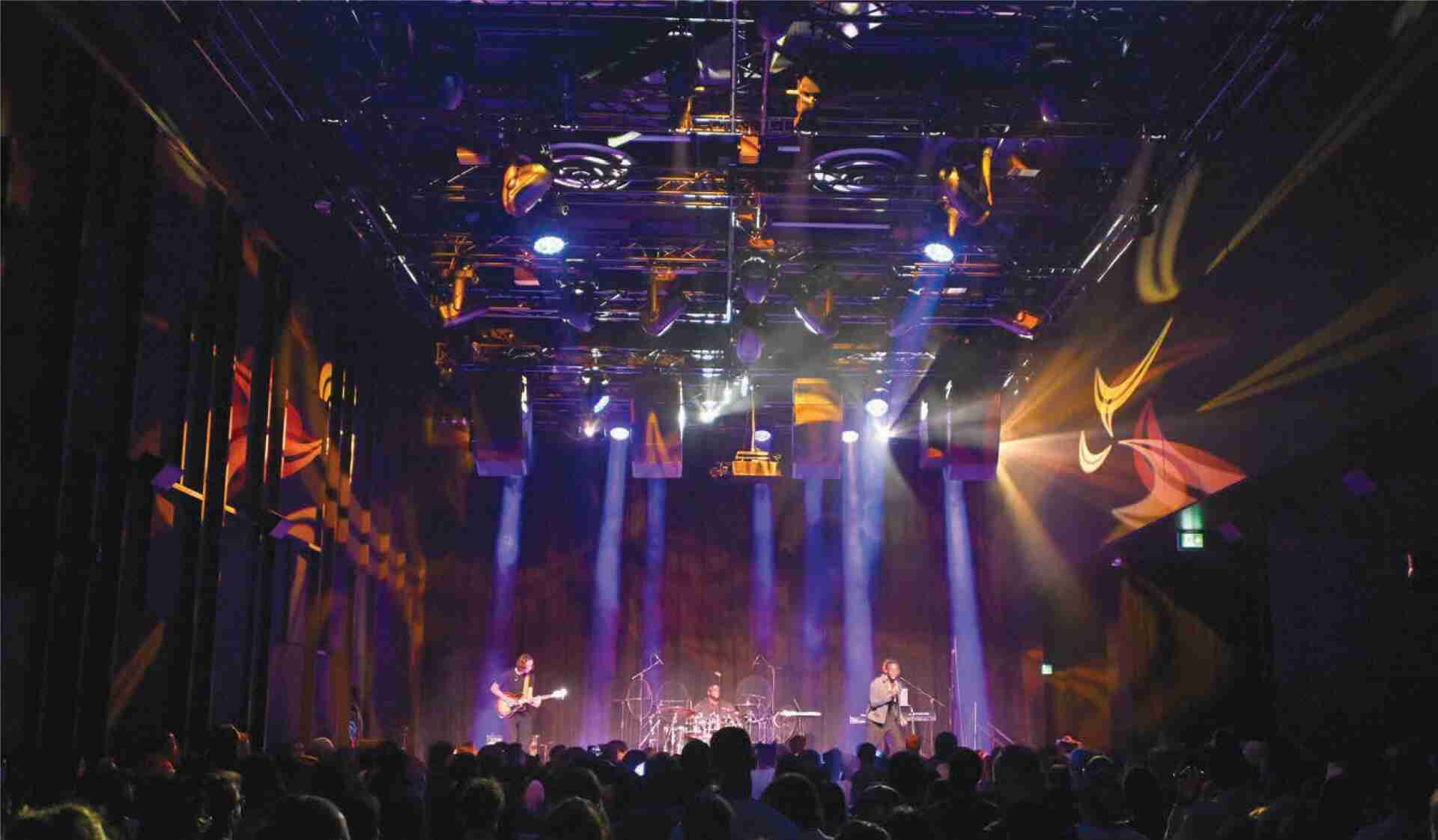
PHOTO: SCOTT NORSWOTHY
A key element was a completely contemporary full-service production environment. The technology must be reliable, and of course, it must sound good.
MARTIN VAN DIJK
SENIOR CONSULTANT
Engineering Harmonics designed and specified all audio-visual systems in the facility, including the Optocore fibre-optic network that provides interconnectivity between all facilities in the hall and tower, integrating the 2,482-seat Massey Hall with the new facilities, and permitting recording, broadcast and archiving of performances and events in any of the venues.
“We brought the hall up into the 21st Century,” says Martin Van Dijk, senior consultant, partner and head of design at Engineering Harmonics. “Nowadays, arts facilities are driven by their technology—technology becomes an inherently important part of the design of the building itself. Every piece of technology not only has to be interconnected, but it also has to operate holistically for everybody in the building. That’s a big challenge, because technologies have evolved to be highly complex and require extensive maintenance and training, as well as dedicated spaces. It was very hard to carve out spaces that didn’t exist in the building built in 1894—for example, there was no need for a rack room back then.
“A key element was a completely contemporary full-service production environment. The technology must be reliable, and of course, it must sound good. Having dealt with digital audio from the early days, we’ve had to deal with many very large installations. There are some technologies that are intrinsically great for signal transport and control, but might not necessarily be the best for delivery,” he says, referring to asynchronous digital audio networks.
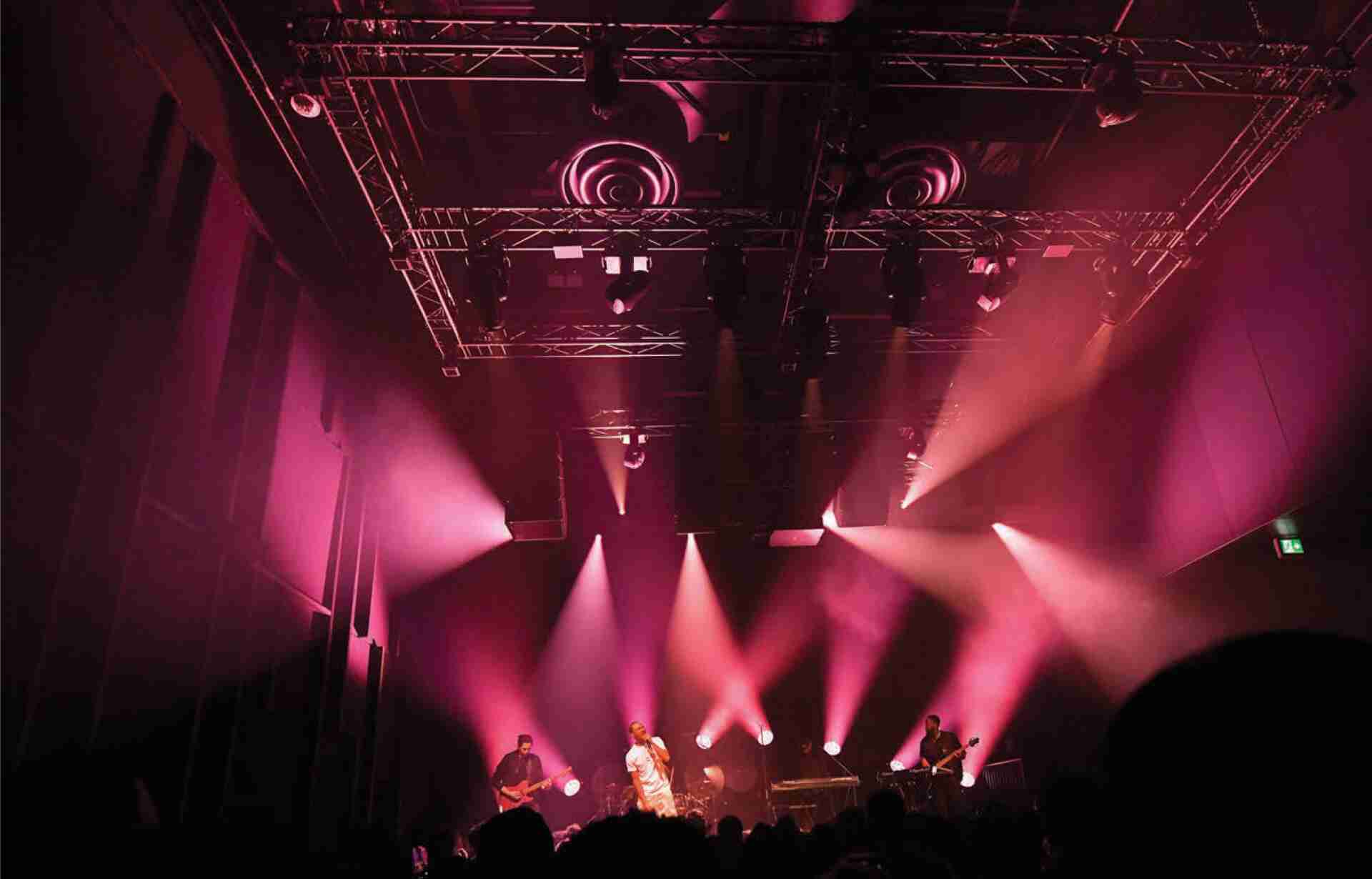
PHOTO: SCOTT NORSWOTHY
It was challenging enough in the analog era to get really high quality audio without noise, distortion, dropouts, and all of those other things. Now we’ve got asynchronous digital networks to deal with, and they were not developed for what we want to do…
MARTIN VAN DIJK
SENIOR CONSULTANT
“Being a roadhouse, Massey Hall supports the Dante, AVB, QLAN, and AES67 platforms. They’re inherent in the fabric, and when acts come in using these platforms, you can imagine every kind of possible scenario. We also need to transport audio around the room or the building, and that requires knowledge of a host of subjects to design an asynchronous network, such as Layer 2/3, IP addressing, subnet, VLAN, Spanning Tree, IGMP, QoS, PTP, sample rate, Spine-Leaf architecture, IEEE 1588, 802.x.x and many more. If you don’t understand this, you are going to run into problems trying to make it work reliably, and there’s going to be a very bad day for you when you’re not going to be able to deliver.
“If you don’t know it and you don’t configure it correctly, you will not get a reliable outcome. You might get it to run for a few hours, and then it will fall over—usually after you’ve gone home. It was challenging enough in the analog era to get really high quality audio without noise, distortion, dropouts, and all of those other things. Now we’ve got asynchronous digital networks to deal with, and they were not developed for what we want to do, but rather to move data around,” Van Dijk says.
On the other hand, “Optocore is a synchronous network with super low latency and an amazing clock. We bring in analog and AES digital inputs into a redundant Optocore ring that allows fault tolerance; if you cut the ring at one point, the audio will go in a different direction and still get to the output. Latency is in sub-milliseconds. Once you enter the Optocore network, the signals are timed, so it has synchronous timing everywhere. So the audio that’s at one end is in time with the audio at the other end. So the analog and AES digital audio at the input is aligned with the audio at the output. That’s a big plus. It’s reliable and it’s robust. That’s why we specified Optocore for the network. You can deliver various different audio signals from any of the venues to anywhere else, and they are all in time,” he says.
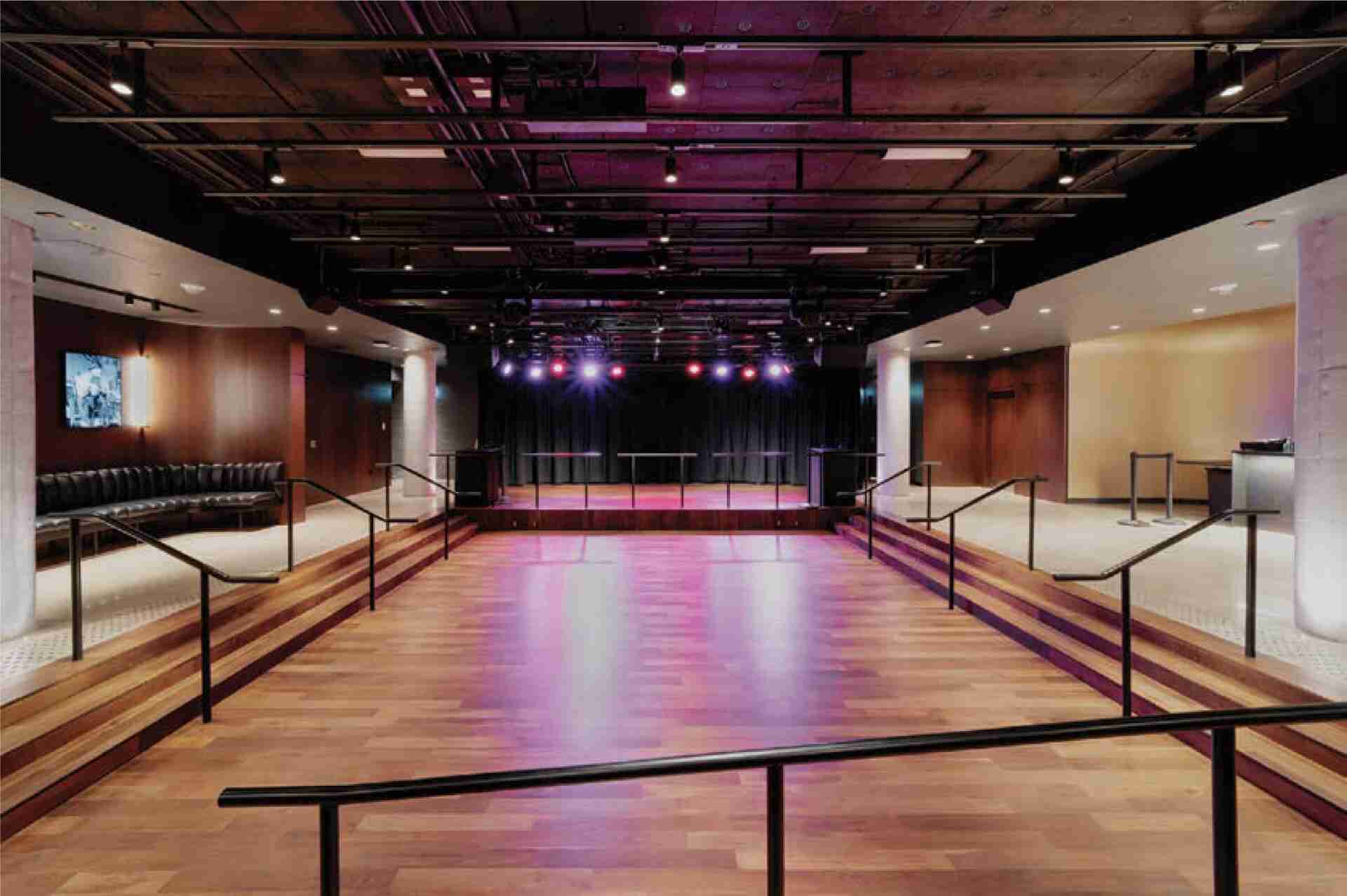
PHOTO: SIMON TANENBAUM
I can honestly say that TD Music Hall is like no other. It gave me chills all the way down my spine. I was totally immersed in the music—it felt like the sound was wrapping around my brain!
ELLA MONK
LIVE MUSIC AFFICIONADO
Doug McKendrick, vice president of production at the Corporation of Massey Hall and Roy Thomson Hall, adds, “We’re using Optocore to transport things like room microphone audio, where extremely low latency is vital for streaming, broadcast and recording. Optocore is also very stable and reliable: at Roy Thomson Hall it has been running everything for 10 years. We turned it on and we’ve never done anything to it since. Tying all our venues together, it’s important not to have different systems or different protocols where latency becomes an issue. It’s also less finicky than a typical blend of consumer and professional audio infrastructure.”
In addition to networking, Engineering Harmonics designed all the performance sound, video and communications systems in the facility, including the new TD Music Hall. Occupying most of the 4th and 5th Floors of the tower, the TD Music Hall gives artists at an intermediate scale a completely professional production experience, with a fully flown lighting rig and a d&b audiotechnik immersive sound system consisting of 58 loudspeakers.
The result is impressive. Live music aficionado Ella Monk reported, “Having been to shows in just about every venue in the city, I can honestly say that TD Music Hall is like no other. It gave me chills all the way down my spine. I was totally immersed in the music—it felt like the sound was wrapping around my brain!”

PHOTO: SIMON TANENBAUM
We want high-quality sound to be part of our brand, because we’re a music hall, and we want to be a place that sounds great when people come, and that should extend to what we’re recording as well.
DOUG MCKENDRICK
VICE PRESIDENT OF PRODUCTION AT THE CORPORATION OF MASSEY HALL AND ROY THOMSON HALL
Also designed by Van Dijk, with acoustic envelope by Bob Essert, founding director of Sound Space Vision, the Deane Cameron Recording Studio control room on the 7th Floor is centred on a Solid State Logic System T S500 control surface with 64 Faders and dynamic automation package. An ATC active control room monitoring system is configured in a 9.1.4 system for mixing in Dolby ATMOS.
“We want high quality sound to be part of our brand, because we’re a music hall, and we want to be a place that sounds great when people come, and that should extend to what we’re recording as well. We do a lot of recording from the main stages in that control room, and there will be some commercial uses as well,” McKendrick says.
A small footprint of the 5th Floor reserved from the upper reaches at the rear of the TD Music Hall houses a pair of capture suites networked via an Optocore fiber optic network to the four performance venues in the center, the Deane Cameron Recording Studio, lobbies, dressing rooms and lounges. The audio and/or video of any performance may be captured for streaming, broadcast, recording, or study.
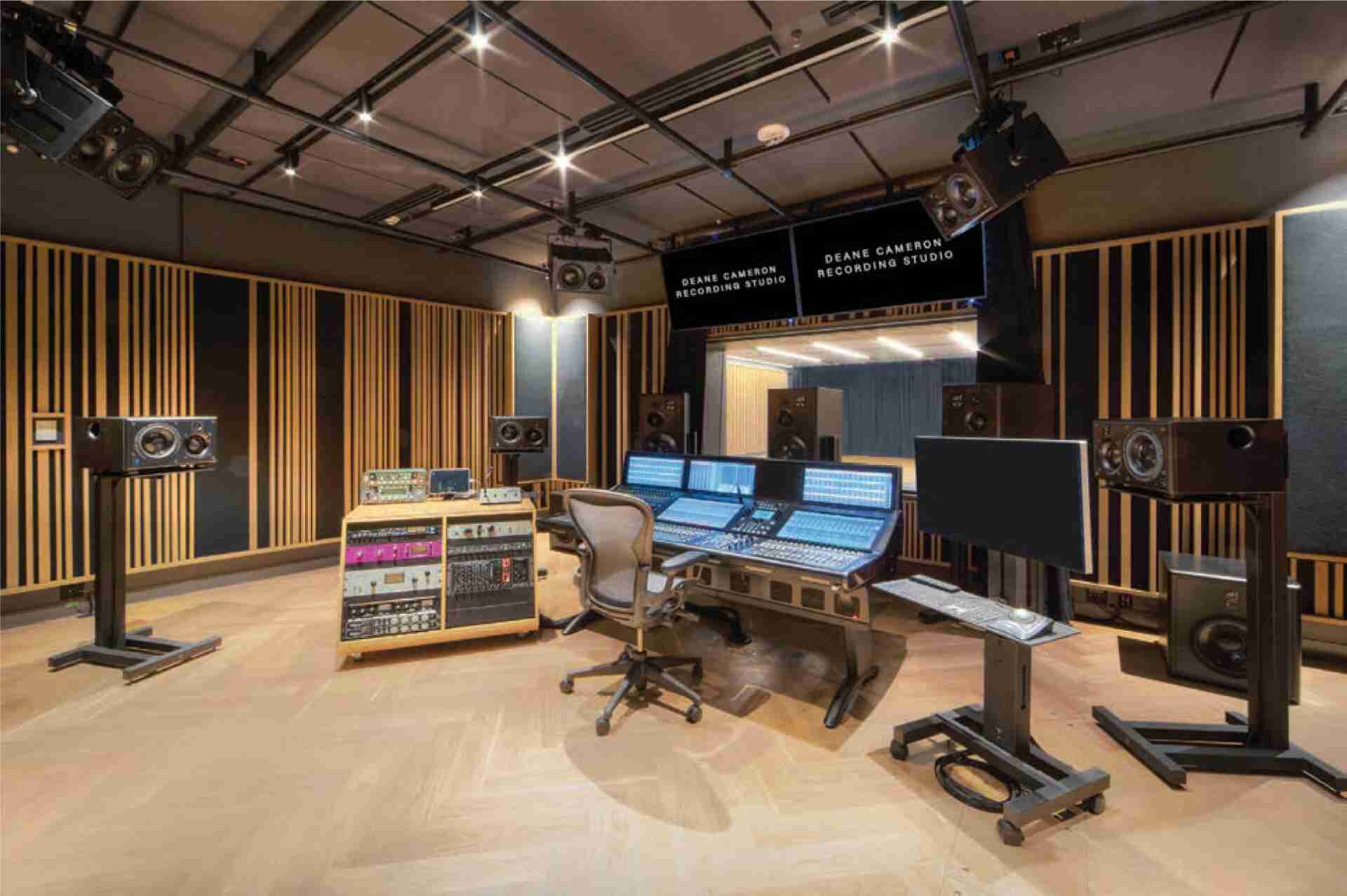
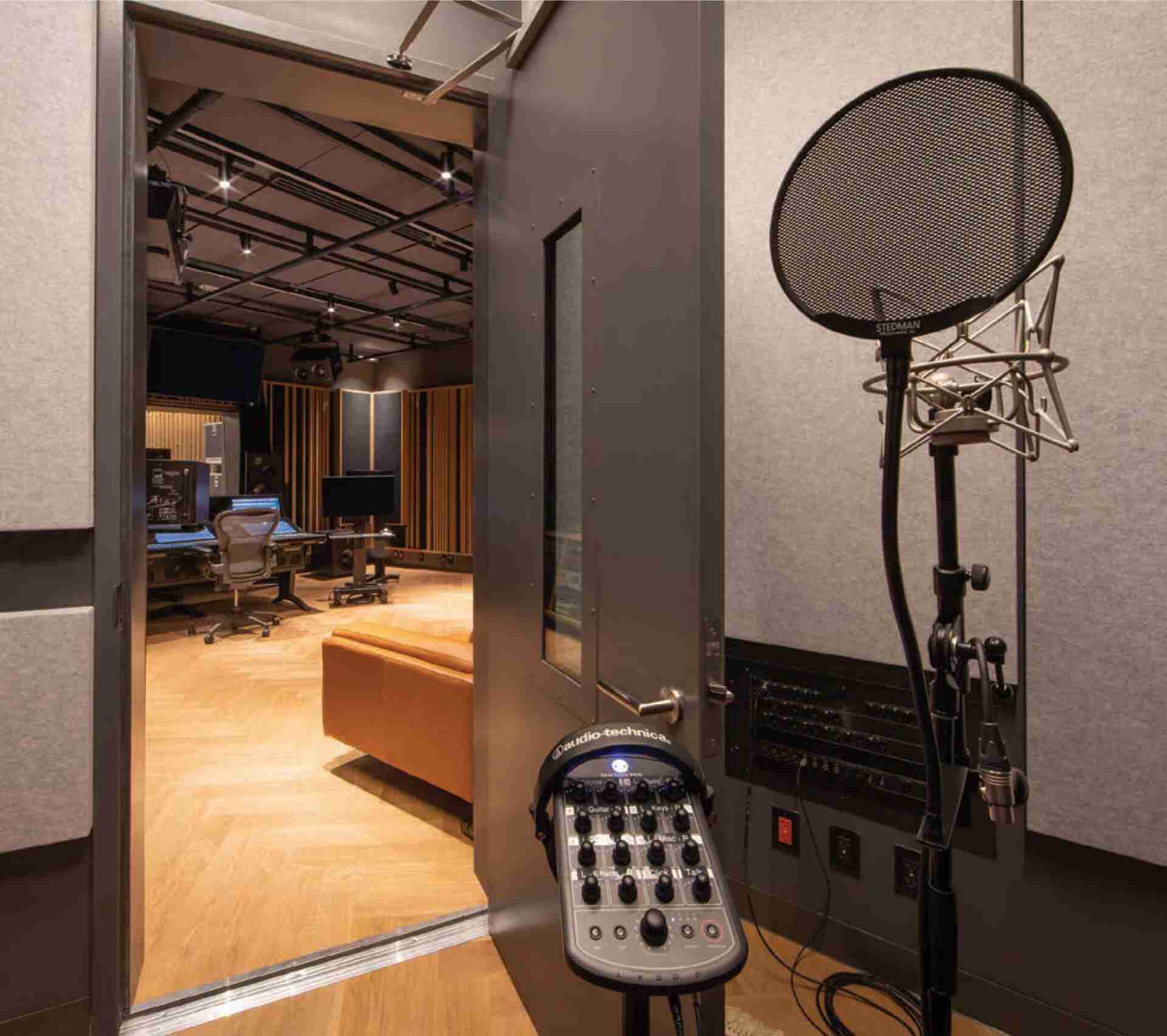
PHOTO: SIMON TANENBAUM
“We’ve started to use the capture suite as a central switching hub for the whole building. As we’re running more events when we’re using multiple floors, it’s proving to be a really useful room because it’s connected to everything,” McKendrick says.
Noting the versatility offered by the new facilities, he adds, “One day recently, engineer Doug McClement was in the audio capture suite recording Andy Kim from the Massey Hall main stage, while I was in the Deane Cameron Recording Studio recording the Julian Taylor Band in TD Music Hall. We’ve certainly upped the ante on the live recordings that we do.”
